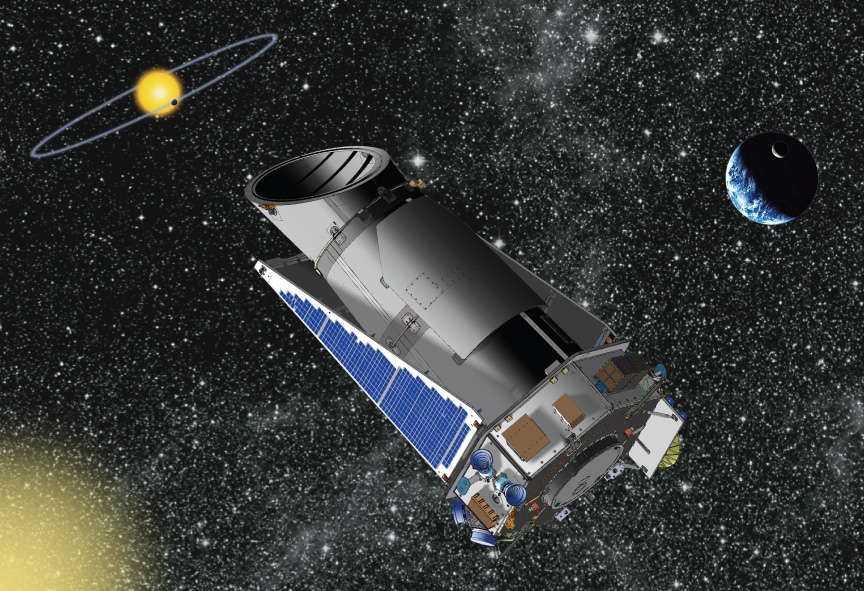Earth’s magnetic field over the South Atlantic is WEAKENING and scientists aren’t entirely certain why
05/22/2020 / By Arsenio Toledo

The magnetic field of the Earth is weakening, and scientists aren’t entirely sure why.
The Earth’s magnetic field is vital for protecting life on the planet from cosmic radiation and charged particles emitted by the sun. The Earth’s magnetic field is generated by the flowing of liquid metal in the outer core, which creates electric currents, and the rotation of the Earth on its axis, which causes these electric currents to form a complex and dynamic magnetic field around the planet.
Scientists estimate that, on average, the Earth’s magnetic field has lost around nine percent of its strength over the last 200 years. However, one large region of weakness is particularly concerning for researchers. Known as the South Atlantic Anomaly, this area stretches from Africa to South America. Just as it has grown and moved farther westward, the strength of the magnetic field in the Anomaly has been rapidly shrinking over the past 50 years.
According to the European Space Agency (ESA), between 1970 and 2020, the “minimum field strength” of the South Atlantic Anomaly has dropped from 24,000 nanoteslas to 22,00o.
However, this isn’t the only thing about the South Atlantic Anomaly that concerns scientists. Over the past five years, another “center of minimum intensity” is emerging in the anomaly southwest of Africa. This, the scientists conclude, indicates that the South Atlantic Anomaly could split up into two separate anomalies.
Usually, when scientists want to visualize the Earth’s magnetic field, they draw it as a powerful dipolar bar magnet tilted at around 11 degrees to the axis of the Earth’s rotation. However, the growth and possible splitting of the South Atlantic Anomaly is now causing scientists to reconsider their ideas, as simple dipolar models may no longer be accurate enough to show the complexity of the Earth’s magnetic field.
ESA spacecraft studying the weakening magnetic field
This new anomaly is making scientists worried. To study it further, researchers from the Swarm Data, Innovation and Science Cluster (DISC) are studying data obtained from ESA’s Swarm satellites, a constellation of three identical satellites designed to study the Earth’s magnetic field. The Swarm satellites carry sophisticated magnetometers and electric field instruments, which allow them to gather accurate data about the Earth’s “geomagnetic field and its temporal evolution as well as the electric field in the atmosphere.”
“The new, eastern minimum of the South Atlantic Anomaly has appeared over the last decade and in recent years is developing vigorously,” said Jurgen Matzka of the GFZ German Research Center for Geosciences (GFZ), Germany’s national research center for the earth sciences.
“We are very lucky to have the Swarm satellites in orbit to investigate the development of the South Atlantic Anomaly. The challenge now is to understand the processes [in the Earth’s core] driving these changes,” he added.
Furthermore, while the weakening inside the South Atlantic Anomaly is still within what scientists consider “normal levels of fluctuations,” it still does not explain precisely why the magnetic field in that area is weakening. Scientists still have not been able to solve this mystery, however there are several theories being explored.
Weakening magnetic field may be a sign of a pole reversal
One theory that scientists have over why the Earth’s magnetic field is weakening is that it is a sign that the Earth is heading for a pole reversal, when the world’s magnetic north and south poles switch places. The last reversal happened around 780,000 years ago, during the Stone Age, and there is even some evidence indicating that the Earth may currently be in the early stages of an ongoing reversal. Scientists have stated that the Earth is long overdue for a reversal, which should occur once every 250,000 years.
This process can take anywhere between 1,000 to 10,000 years to complete. During this time, the strength of the magnetic field will weaken, become more fluid and complex and, for a time, the Earth might even get more than two poles at the same time. (Related: If the Earth’s magnetic field reverses, scientists think they know where ground zero will be.)
Scientists say that this weak transitionary phase is when humanity – and all life on Earth, for that matter – is most vulnerable.
During this time, if a coronal mass ejection (CME) were to occur, the Earth would be in greater danger. The Earth’s magnetic field is able to block out many CME particles. However, with a weak field, this shielding ability is much less efficient.
A strong CME occurring during the transitionary stage of a magnetic reversal might punch holes in the Earth’s atmosphere, which would be particularly concerning for several reasons, such as for people vulnerable to skin cancer. Just as importantly, this solar electromagnetic pulse could cause the world’s electronically based infrastructure to crumble in an instant.
While the mystery of why the Earth’s magnetic field is still unsolved, the ESA is still proud of the work they are doing and of the magnetic field observations being conducted by its Swarm satellites, which are providing “exciting new insights into the scarcely understood processes of the Earth’s interior.”
Sources include:
Tagged Under: cool science, electromagnetic field, electromagnetic pulse, EMP, future science, magnetic field, magnetic poles, pole reversal, research, South Atlantic Anomaly, weird science
RECENT NEWS & ARTICLES
COPYRIGHT © 2018 BREAKTHROUGH.NEWS
All content posted on this site is protected under Free Speech. Breakthrough.news is not responsible for content written by contributing authors. The information on this site is provided for educational and entertainment purposes only. It is not intended as a substitute for professional advice of any kind. Breakthrough.news assumes no responsibility for the use or misuse of this material. All trademarks, registered trademarks and service marks mentioned on this site are the property of their respective owners.


















